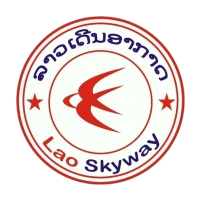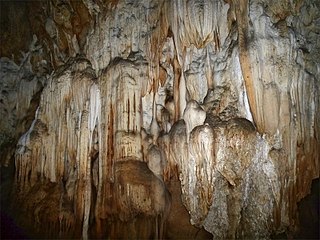This article does not cite any sources .(March 2015) (Learn how and when to remove this template message) |
| |||||
| Decades: | |||||
|---|---|---|---|---|---|
| See also: | Other events of 1962 List of years in Laos | ||||
The following lists events that happened during 1962 in Laos .
This article does not cite any sources .(March 2015) (Learn how and when to remove this template message) |
| |||||
| Decades: | |||||
|---|---|---|---|---|---|
| See also: | Other events of 1962 List of years in Laos | ||||
The following lists events that happened during 1962 in Laos .

Bounnhang Vorachith is a Laotian politician who has been General Secretary of the Lao People's Revolutionary Party and President of Laos since 2016. Previously he served as Deputy Prime Minister from 1996 to 2001, as Prime Minister from 2001 to 2006, and as Vice President of Laos from 2006 to 2016.

Luang Namtha is a district as well as the capital of Luang Namtha Province in northern Laos. The city lies on the Tha River.
Long District is a district (muang) of Luang Namtha Province in northwestern Laos.
Viengphoukha District is a district (muang) of Luang Namtha Province in northwestern Laos.
Lao Customs is the customs service of Laos, with the responsibility of governing and overseeing the flow of goods, people and vehicles into and out of Laos; operating customs offices; and collecting import and export duty fees. The department advises businesses and travelers incountry and participates in regional and international customs-related associations and programs.

Lao Skyway, formerly known as Lao Air, is a private airline with its headquarters at Wattay Airport in Vientiane, Laos. It operates scheduled and charter services to airports in Laos.

Vieng Phouka, is a town in Luang Namtha Province, northeastern Laos, approximately 50 kilometres southwest of the town of Luang Namtha. It is the capital of Viengphoukha District. The town was affected by the 2007 Laos earthquake, the epicentre only being several kilometres to the southwest.

Muang Sing is a small town and district (muang) in Luang Namtha Province, northwestern Laos, about 60 kilometres northwest of the town of Luang Namtha and 360 kilometres northwest of Vientiane. It lies very close to the border with Yunnan, China, surrounded by mountains and rivers. Historically, Muang Sing has been a major producer of opium and still has problems with drugs and smuggling, due to its geographical position close to China and Myanmar. A notable Buddhist centre, with a dramatic growth in temples since the 1980s, it is popular with trekkers in northern Laos.
Kiorr is a Palaungic language of Luang Namtha Province, Laos.
Phanaʼ is a Loloish language of Laos and China. Phanaʼ is spoken by 500 people in Laos. In China, it is spoken in Mengla County, Yunnan Province. It is closely related to Sila, which is spoken by 2,000 people in Laos and Vietnam. Badenoch reports that it is similar to.

Ban Nam Di is a village in Luang Namtha Province, Laos, located about 6 kilometres (3.7 mi) northeast of Luang Namtha. It has a population of about 500. The Nam Di River flows nearby and the Nam Di waterfall is about a 1 kilometre (0.62 mi) from the village. The village is famous for its bamboo paper making by the Lanten peoples. The locals are adept at turning bamboo into pulp on the river banks and making paper by spreading it thinly over square cotton screens. The paper is usually primarily for Taoist religious purposes, but in recent years the villagers have been producing it as souvenirs for tourists. The houses in the village are mainly made with bamboo roofs.
Luang Namtha Museum, also Louang Namtha Provincial Museum, is a museum in Luang Namtha, Laos. Largely an anthropological museum, it contains numerous items related to local people such as ethnic clothing, Khamu bronze drums, textiles, ceramics, tools, household utensils, hand-crafted weapons, and Buddhism-related items.
Sila is a Loloish language spoken by 2,000 people in Laos and Vietnam. Sila speakers are an officially recognized group in Vietnam, where they are known as the Si La.

Luang Namtha is a province of Laos in the country's north. From 1966 to 1976 it formed, together with Bokeo, the province of Houakhong. Luang Namtha Province covers an area of 9,325 square kilometres (3,600 sq mi). Its provincial capital is Luang Namtha. The province borders Yunnan, China to the north, Oudomxai Province to the east and southeast, Bokeo Province to the southwest, and Shan State, Burma to the northwest.
The Yang people, also known as the Nhang or Nyang, are a Tai-speaking ethnic group of Phongsaly Province, northwestern Laos. Chazee (1998) reports that they number 5,843 people as of 2015. The Yang are heavily influenced by Tai Lue culture, although the Yang of Namo Nua village, Oudomxay province are more heavily influenced by Tai Dam people culture.
The Battle of Luang Namtha, fought between January 1962 and May 1963, was an important engagement of the Laotian Civil War. It came about as a result of the turmoil following Laotian independence as a result of the First Indochina War with France. The Kingdom of Laos had foreign soldiers upon its soil, and a political struggle in progress concerning those outside troops. Following a coup and counter-coup that left General Phoumi Nosavan in charge, the general decided on military action to settle the political issue of interlopers in Laos.

Nam Ha National Protected Area is a national protected area in Luang Namtha Province in northern Laos. This mostly forested park is home to a variety of ethnic groups and diverse animal and plant species. The park is an ecotourism destination.
The following lists events that happened during 1961 in Laos.
Operation Snake Eyes was a proposed military operation of the Laotian Civil War. Planned in mid-December 1969 by the U.S. Ambassador to Laos, the planned interdiction of the newly constructed Chinese Road, Route 46, was aimed at halting the road's progress toward the border with Thailand. The offensive by guerrilla raiders was delayed six months for operational reasons. When it was finally ready to be launched, it was pre-empted by the furor caused by the Cambodian Incursion. Fearful that Operation Snake Eyes would arouse even greater publicity, the Central Intelligence Agency handlers of the guerrillas canceled the operation on orders of the White House. Attempts to limit Chinese expansion toward the south would be left to future operations, such as Operation Phalat and Operation Sourisak Montry.
| This article related to the history of Laos or its predecessor states is a stub. You can help Wikipedia by expanding it. |
| This year in Asia article is a stub. You can help Wikipedia by expanding it. |